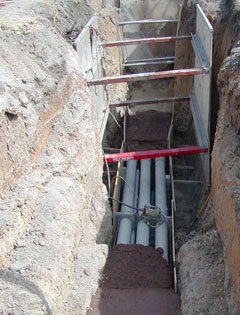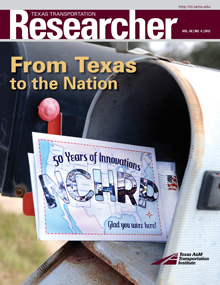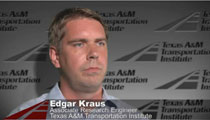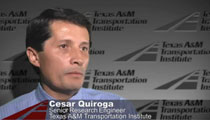
Good planning and attention to detail allow departments of transportation (DOTs) to predict the time and resources needed to complete a transportation project. But no matter what the size and scope, from relatively small (such as a new sidewalk) to large (adding lanes on a highway), almost every project encounters a conflict with existing utilities — telecommunication networks, gas lines and water pipes, etc. The Texas A&M Transportation Institute (TTI) recently completed SHRP 2 R15B: Identification of Utility Conflicts and Solutions, which examined best practices from around the country and developed tools for effectively managing and resolving these conflicts.
Frequently, conflicts result from inaccurate, incomplete information about existing utilities. In other cases, it’s due to ineffective coordination between a DOT and a utility company, or a lack of understanding of each other’s processes. “For a transportation project, utilities are often an afterthought. If there isn’t a good process in place to deal with them early, then there could be a delay in the design or construction, added cost to the public, and possible unexpected outages,” says TTI Associate Research Engineer Edgar Kraus.
Utility relocations are common when a conflict exists with a feature or phase of a transportation project. If not managed properly, utility relocations can be expensive, with taxpayers or ratepayers absorbing the costs. If the conflict is identified early in the development process, other strategies, such as redesigning or realigning the transportation project, are possible. While many states have an approach to utility conflict management, little research has been done to test and refine possible methods.
Led by TTI Senior Research Engineer Cesar Quiroga, manager of TTI’s San Antonio Office, researchers found that practices involving the use of utility conflict matrices vary widely across the country. Utility conflict matrices enable users to organize, track and manage utility conflicts. The team combined identified best practices into a model utility conflict matrix product. This tool helps a DOT define what actions to take and when to take them in the project development and delivery process to avoid a utility conflict. This flexible database approach can be used to fit individual state DOT needs.
“For a DOT, the tool gives utility coordinators a better handle on how to manage utility conflicts effectively. For utility stakeholders, including utility companies, it shows them other options besides having to move a utility,” says Quiroga.
Along with the utility conflict matrix, the team developed a training seminar that covers utility conflict concepts and management. The implementation guidelines address topics such as audience for the products, research product leaders, activities necessary for successful implementation, and criteria for judging the progress of implementation. Researchers also identified and addressed potential roadblocks to implementation of the tool.
“There is a significant need for improvement and optimization of utility processes around the country,” says Kraus. “Our matrix focuses on the keys to avoiding and resolving utility conflicts — communication, coordination and cooperation.”



